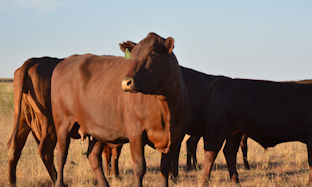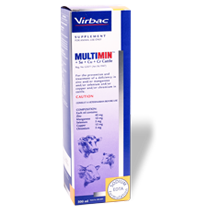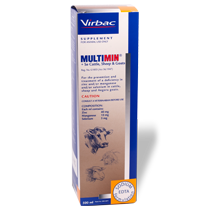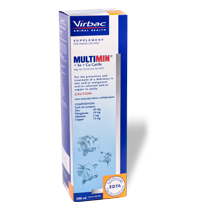
Trace-Mineral Supplementation and the Breeding Season - Cows
Trace-mineral supplementation gets far more attention today than in the past and not without reason. The role that trace elements play in optimal production is being understood better than ever, thanks to ongoing research on the topic.
Mating season is for most farmers the official start of the reproductive cycle. We also know that reproduction is the main driver of profitable cattle production. Therefore, we should do everything in our power to ensure that the breeding season gets off to the best possible start.
Reproduction and Nutrition
The importance of nutrition before and during mating season is well known to optimise reproduction and cannot be overstated. Cows’ condition should be optimal (3.0 to 3.5) during the breeding season. It serves as the foundation of reproductive success. The quality and quantity of their nutrition, especially during the last six weeks before mating season, play an important role. Cows’ should preferably be in a phase of improving condition just before and during the breeding season.
Cows’ that were not in proper condition at the start of the calving season, will struggle to hit the preferred condition at mating. With the drain of lactation and unfavourable grazing conditions in the spring and early summer, supplementation of a production lick and or silage or good quality hay is recommended.
Role of Trace Minerals
Although the macro-nutritional elements (energy, protein, macro-minerals, etc.) form the foundation of nutrition and determine the condition and body weight of cows, the role of trace minerals cannot be ignored. Trace minerals can be regarded as the “cement” between the bricks that reinforces the structure or the “oil” that makes the gears spin smoothly. Trace minerals play an important role in the many enzyme systems that support all body processes.
During the breeding season, trace minerals play a critical role in processes like oestrous (coming in heat), successful ovulation (release of eggs), fertilisation, the implantation and survival of the embryo. The contribution of the most important trace minerals during this critical period can be summarised as follows:
- Manganese (Mn) plays a role in the production and regulation of the sex hormones that are important for cows to come in heat (oestrous), ripening of the follicles, and successful release of eggs.
- Zinc (Zn) plays a major role in the successful fertilisation of the egg and the development of the embryo, since it is important for fast-dividing cells.
- Copper (Cu), along with zinc and manganese, forms part of an enzyme complex (superoxide dismutase), that performs a major anti-oxidising function in the body by neutralising and/or limiting free radicals. This leads to better embryo survival.
- Selenium (Se) is known as the “fertility trace mineral”. It plays an important role in egg development, fertilisation, and embryo survival. It is, amongst others, an integral part of the enzyme glutathione peroxidase. This enzyme is necessary in the final phase to neutralise certain oxidative radicals. Optimal levels of selenium, in conjunction with vitamin E, are necessary to prevent/reduce early embryonal losses (resorption). Selenium is also important to support the ewe’s immune system and optimise the action of vaccines.
Supplementation
We should realise that trace-mineral supplementation can’t be considered only when symptoms of clinical deficiency are observed. Suboptimal levels of trace minerals are just as and even more detrimental. Although suboptimal levels might seem relatively insignificant and can pass by unnoticed, it has a negative effect on reproduction, production, and immunity.
Oral supplementation of trace minerals by means of licks serves as the base source of supplementation on a daily basis throughout the course of the year. It is easy and relatively cheap. Unfortunately, their many factors that influences the effectiveness of these supplementations. Incorrect intake (due to limited trough space, dominance in the herd, high salt levels). The improper absorption of trace minerals under the effect of antagonists (Ca, Fe, S), also limits the effectiveness of oral supplementation.
Injectable supplementation with a product like Multimin® overcomes all the shortcomings of oral supplementation. Each cow receives her top-up supplementation at the right time when the need increases. The uptake of these trace minerals is not affected by antagonists in the intestinal tract. One of the advantages of the Multimin® formulation is that the selenium it contains, is immediately available to be built into functional proteins that are part of enzymes.
Supplement your cows with Multimin® around four to six weeks before the start of breeding season. For the best results, also supplement with sufficient levels of vitamins A and E. Vitamin A improves the action of zinc and vitamin E supports the action of selenium. A Multimin® top-up supplementation at critical times can greatly improve reproduction.
Value
An increase in calving percentage, even by just one percentage point (e.g. from 75% to 76%) is more than enough to justify the cost of three Multimin® treatments. One of the other benefits is that more cows will conceive earlier in die breeding season. This simplifies management as the variation in age and weight is less. The other benefit of this is that for every day that a calf is born earlier, it will weigh a kilogram more at weaning time!




